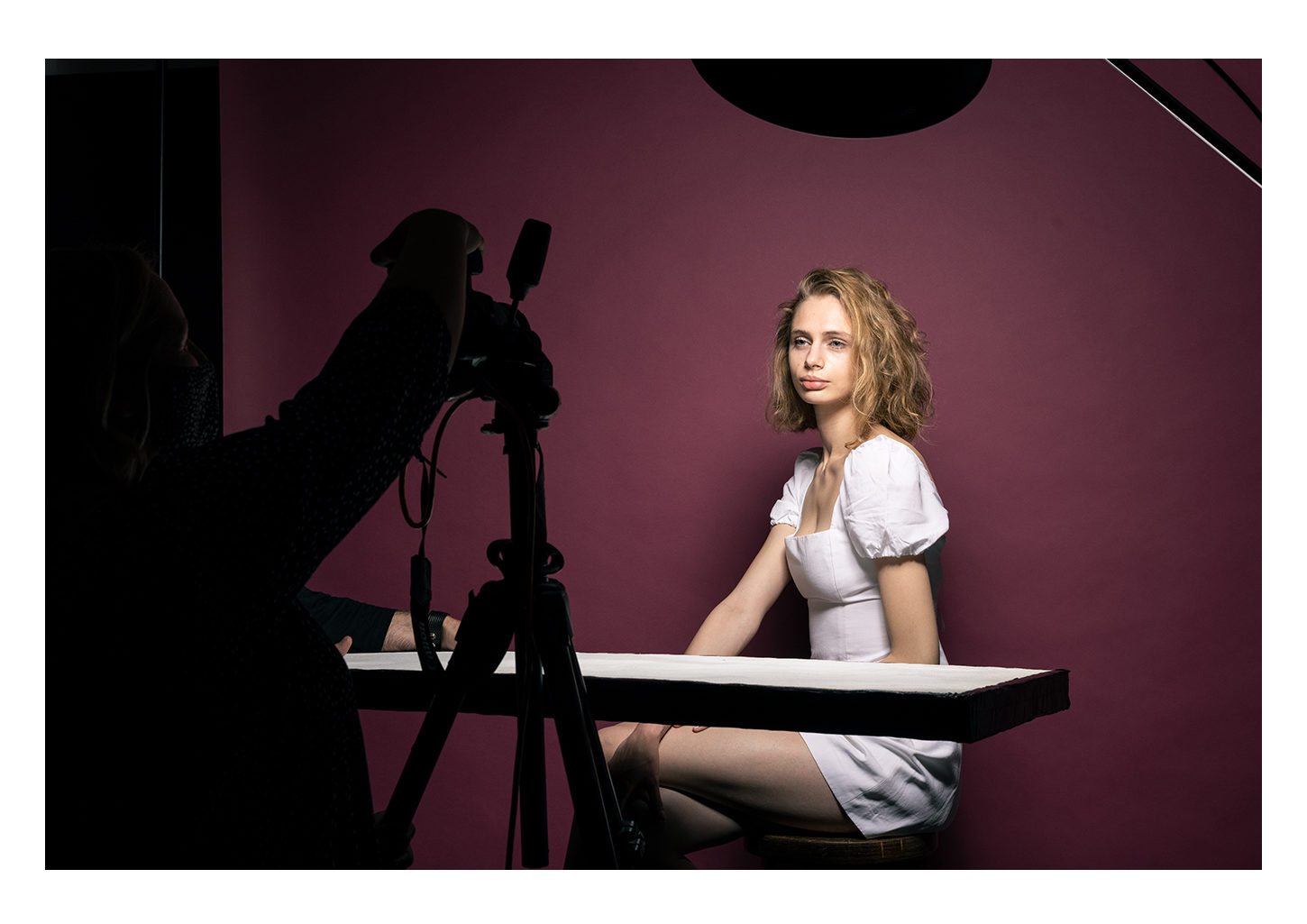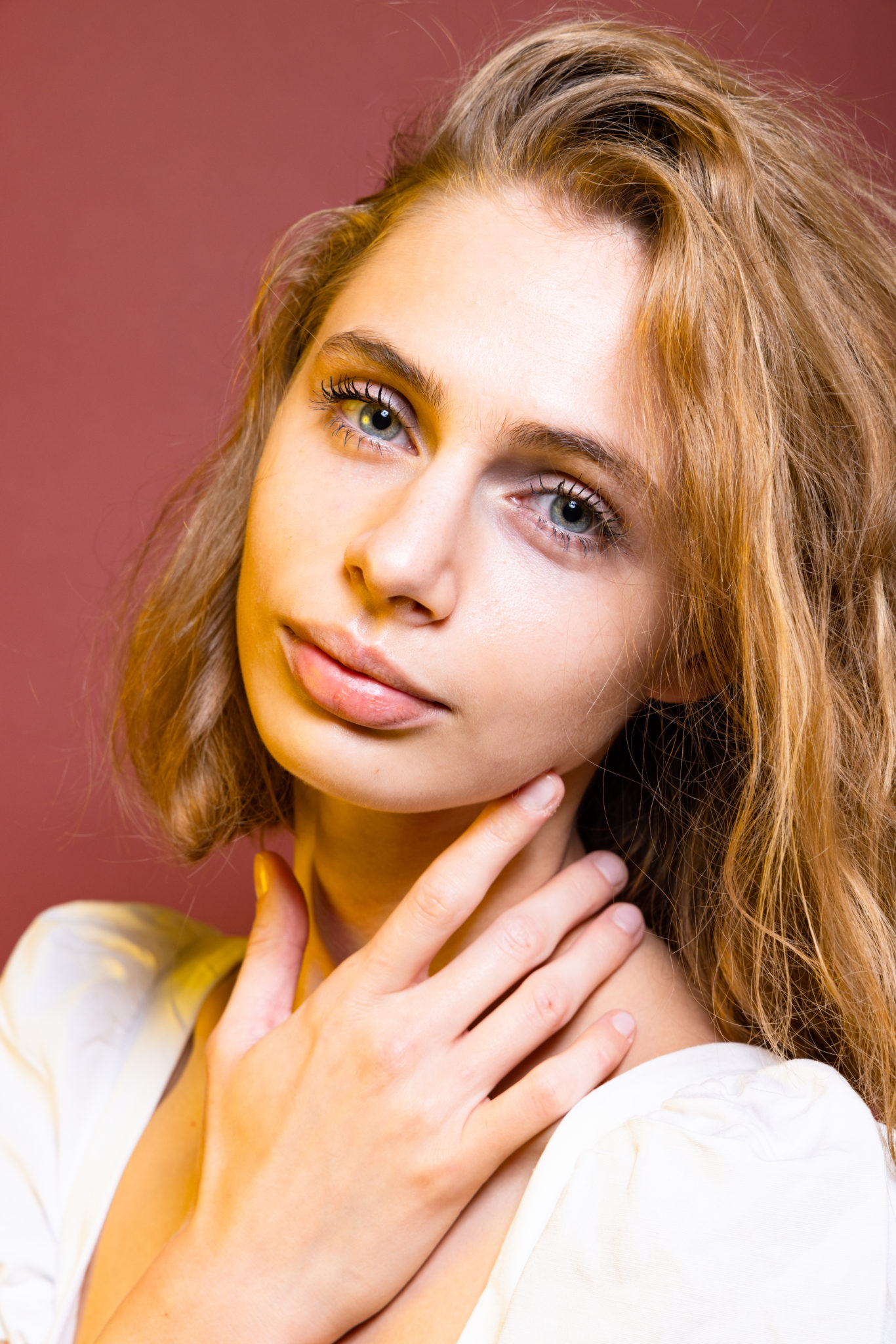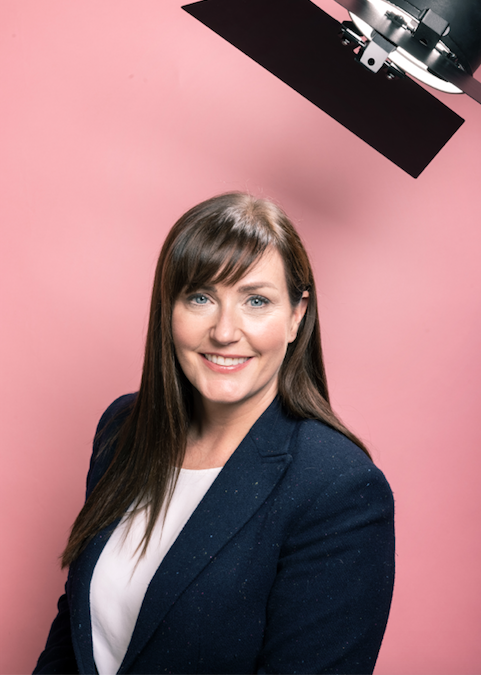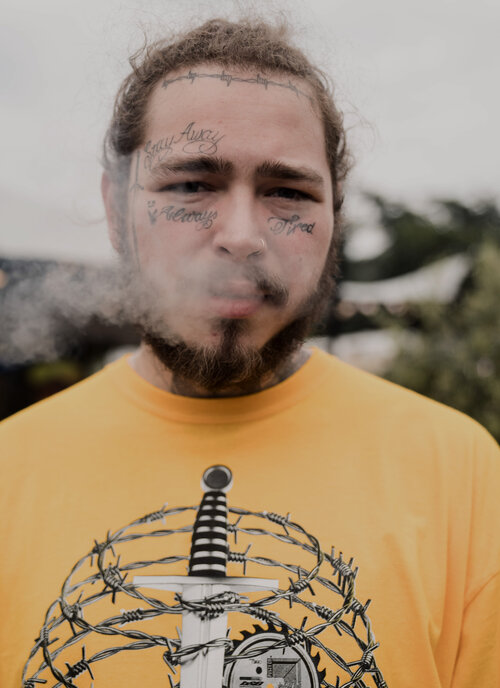- Opinion
- 06 Dec 21

With tutors who are immersed in the industry, and top-class facilities, there’s no shortage of reasons to study photography at Griffith College. Programme director Sinéad Murphy brings us on a deep-dive into the course, and tells us about her own journey into photography...
My journey in photography started back when I was a kid. My dad gave me a camera, and I was always taking pictures. It fascinated me. My grandad was a forensic photographer in the Gardaí, and he'd show me everything from landscape photography to crime scene photography – which they wouldn't be allowed to do now!
But I just loved it. And that's what unites all the students and tutors in our course at Griffith College – we're all genuinely so passionate about photography.
In our photography programme, we don't just pour information into our students’ heads, that they then must regurgitate. It’s practise-based learning. We work working closely with them on their ideas, and teach them the techniques to action them. We get to see the end product from the inception as a brainstorm, project development, to resolution. There’s a lot of satisfaction in that.
We have a three-year BA in Photographic Media, and a one-year Certificate in Photography (full and part-time), which is embedded; the one-year cert is essentially the first year of the degree. We teach everyone together, in the same space, which has lots of advantages.
What makes us different from a lot of programmes is that we’ve got more of a commercial slant on things. We know that for most students, in the end it is about making a career of this. It is about work. Employment.
So, when we brief the students on their projects, we always ask, ‘Who’s it for? Who’s the client? Who’s the target market? Where’s it going to end up?’ We’re always encouraging them to think in that manner, no matter what genre they’re working in.
We encourage them to take on jobs while they’re on the course, and to enter competitions. We motivate the students to publish and sell their work. We’re always gearing them towards that. It is all valuable experience.
Our students don’t just finish the degree and say, ‘What will I do now…?’ They graduate with something really tangible – a business plan, a physical portfolio, an online portfolio, lots of different experiences, and lots of contacts from networking.
 Credit: Johnny Savage
Credit: Johnny SavageGREAT DYNAMIC IN THE CLASS
The great thing about photography is that it attracts people of all ages, from all kinds of backgrounds. That’s what I love about it.
We get students from all over Ireland, as well as a lot of international students. At the moment we have students aged from 18 to over 60. It is a fantastic range, which adds another dimension to the course.
We get night students who might have been working in the industry for a few years, who now they want a QQI qualification. Equally, we get school-leavers and younger people, who just know that they want to work in visual media. There's a video element to the programme, which appeals to a lot of people.
We also get people in who have retired, or want to change jobs. Lockdown has given people time to think – they may have always been interested in visual media, but may have been in a completely different job that wasn’t actually feeding their soul. We attract a lot of people like that. They keep their job, but work away on the course at night. And then, at some point, they’ll be ready to leave their job, and jump into it.
It’s a real mix, and there’s a great dynamic in the class.
 Credit: Hayley Hoolihan
Credit: Hayley HoolihanA LOT OF INDUSTRY EXPERIENCE
We’re always looking at what’s happening in the industry, and at the latest developments in photography – in terms of software and also hardware. We have a range of equipment for loan and supportive technician service. They can borrow cameras, tripods, portable lights for on-location work, and more. Obviously all of our studios are fully equipped too.
We try to keep as up-to-date as possible – but the key to that is that the tutors are out there themselves. The tutors are all part-time, so they’re all out actually shooting and working in the industry. Our tutors are well respected in the commercial and non-commercial world. As long as they’re out keeping their practices up, that informs us as to what we need to do. I try to hire tutors who have different backgrounds – because that gives the students more variety.
For example, Johnny Savage, who teaches the commercial and advanced commercial photography modules, is a great asset to have. He does lighting workshops with the students in the studio, and flash workshops outside the studio. His own work would be predominantly people-oriented. He was shortlisted for the Zurich Portrait Prize in 2019, for a portrait he did of Mary Robinson.
Kevin Fox is one of the lecturers who’s been with us the longest. His personal work would be more editorial and documentary photography, but he also does a lot of product photography and e-commerce for his company, weshoot.ie – whose clients include Gym+Coffee, Arnott's and Lifestyle Sports. He’s increasingly doing more moving image work for products, like what you’d see on Instagram. There’s more of a demand for that now. We’ve got that on the course, and we’ll probably bring even more of that in, down the line.
Then there’s Miriam O’Connor. She teaches some of the theory on the course. She’s recently shown work in a number of different galleries, and she’s just published a book, Tomorrow is Sunday. She lives and works on a farm down the country, with her mum. She made a beautiful documentary piece on what it’s like to live and work on a farm, run by women. Herself, Robert Ellis and Michael Durand would be more fine-art oriented.
 Credit: Miriam O'Connor, Tomorrow is Sunday (2020)
Credit: Miriam O'Connor, Tomorrow is Sunday (2020)Our team is brilliant. I can't speak highly enough of them. We’ve got a lot of teaching experience, but we’ve a lot of industry experience as well. And that really helps.
EVERYTHING FROM A PAPERCLIP TO A SHEEP
For me, the interest in photography was always there. When I had to get work experience in Transition Year, I went to a commercial photographic studio in town, and I learned all about product photography. I loved everything about working in the studio. I worked with them during my summers, all the way through until I finished school.
I then went to IADT in Dun Laoghaire, and got a diploma in commercial photography. I worked as a stock photographer in the summer after college with a company which was later bought over, and is now Getty Images. That was a brilliant learning curve – photographing everything from a paperclip to a sheep!
Afterwards, I moved over to Brighton, and I got my degree there, because there were no degree courses in photography in Ireland at the time. I worked on loads of different pieces in London, while I was there. I shot for the UK’s Independent on Sunday, and The Guardian.
Eventually I came back here, and started teaching – which I love. I started out as a part-time lecturer and then moved my way up into the position that I’m in now.
I’ve also worked as a picture editor on a few books; The Gathering: Reflections on Ireland, and a book with Today FM, US2. I just love compiling images, and then editing them down.

Sinéad Murphy (Credit: Johnny Savage)
PUNCHING ABOVE THEIR WEIGHT
Celebrating the wins with the students has been a real highlight and a source of pride. You know how much it takes for someone to not only initiate an idea, but to execute it, and put themselves out there.
We do really well in competitions, such as the National Student Media Awards (SMEDIAS). It’s always great to see our students doing great in competitions, or punching above their weight in big categories.
We have a closed group on Facebook for anyone who has done the course, or anyone who is doing the course, and I’m always putting jobs up on it. Networking and supporting people you know in the business is really important.
Two of the graduates were working for Kevin Fox, in his studio – shooting for the likes of Gym+Coffee, and the various other clients he’d have. There are opportunities like that, for the graduates to go on to work with us, which is great.
Our graduates do well, such as Brian Mulligan, who has worked in live music photography – he was always shooting gigs down at Electric Picnic, and various other outdoor and indoor gigs.
 Credit: Brian Mulligan – brianmulligan.me
Credit: Brian Mulligan – brianmulligan.meOne of the first-year students has also just taken an interest in gig photography; he's been off shooting on film, to experiment with it. We encourage them to go out shooting all kinds of things. Gig photography is great because it’s so dramatic. You don't use flash, so you just get stuck in, and really try to capture the atmosphere.
Some of our graduates started out doing gig photography, and are now doing photojournalism or sports photography. Quite a few get into social photography, shooting weddings and family portraits.
When David Fogarty was in Griffith College, he won Sports Photographer of the Year at the National Student Media Awards. He's earned lots of accolades since, and has photographed the likes of Drake, Post Malone, Skepta and Conor McGregor. David got his big break from having done the video production module on the course.

Credit: David Fogarty – gingerbeardphotography.com
THINKING OUTSIDE THE BOX
Of course, the first lockdown was very challenging for us. I was teaching the first-year students studio photography – so they were learning how to light for product, and light for people. And then, all of a sudden, they had no access to anything.
My technician and I created a list to see who needed what equipment. During that week, before we went fully into lockdown, while the college was shut, I drove around Dublin giving out equipment to the students – studio lighting, cameras and tripods. We gave everything out, because we knew the lockdown was going to go on a bit longer than expected. We posted equipment down the country too because a lot of the students had left Dublin.
No matter what, I wanted the students to be able to keep going, and have at least one piece of equipment, or things that they could pass to one another. Other colleges did the opposite – it was a crazy time, and no on really knew what the best course of action was to take.
In one of my modules with the first-years, I went full Blue Peter-style arts and crafts, to try and help them problem-solve. Problem solving is a huge part of photography. I asked, ‘What have you got under your kitchen sink? I’m going to show you how to shape light, and how to make a softbox out of whatever you have in your house.' Flashes, greaseproof paper, and sieves were used!
From September 2020, we were back running all the practical classes and all the workshops on site. We had the studios open seven days a week for bookings, as they always are, and we just ran the theory online. And people came back to life again!
This September/October, we were back fully on-site. We’re only doing the odd class online.
The students wear masks, sanitise their hands all the time, and they’re sitting apart. We bought air purifiers for the darkrooms and the studio too.
The students really appreciated it and made the most of it – because they've all had friends and siblings in other colleges, who were literally living in their bedroom, with all their work online.
Griffith College was really open to thinking outside the box. The graduates in 2020 didn’t get an exhibition, because we were still in a partial lockdown – so we put the show up on the Irish Poster Advertising sites around town, as exhibition pieces on billboards. It was great. This year, we presented the graduates' work in a beautiful limited edition box-set, as well as online.
INTERESTED IN APPLYING
I would always advise people interested in applying to look at the work that’s coming out of the course, which they can see on our Instagram (@griffithcollegephoto), and on our Facebook page. Scroll through, and look at what the students are doing, what the graduates are doing, and what the tutors are up to. That’s the most valuable thing. The learning is all there to see.
And also, come into the exhibitions – we have one coming up in January. Come in and have a look at the work, and talk to the students.
Come to the Open Days, too. People can also always arrange to come in, and have a tour around the facilities. I introduce them to the students, and let them chat to people. That's when they get that sense of: ‘Okay, I can see myself here...'"
This article was produced as a special feature by Hot Press content studio, in partnership with Griffith College…
The BA in Photographic Media and the Certificate in Photography are based on Griffith College's Dublin Main Campus. The college's next online Open Evening is on Wednesday, January 12. See work from graduates here.
Visit griffith.ie for more information.










